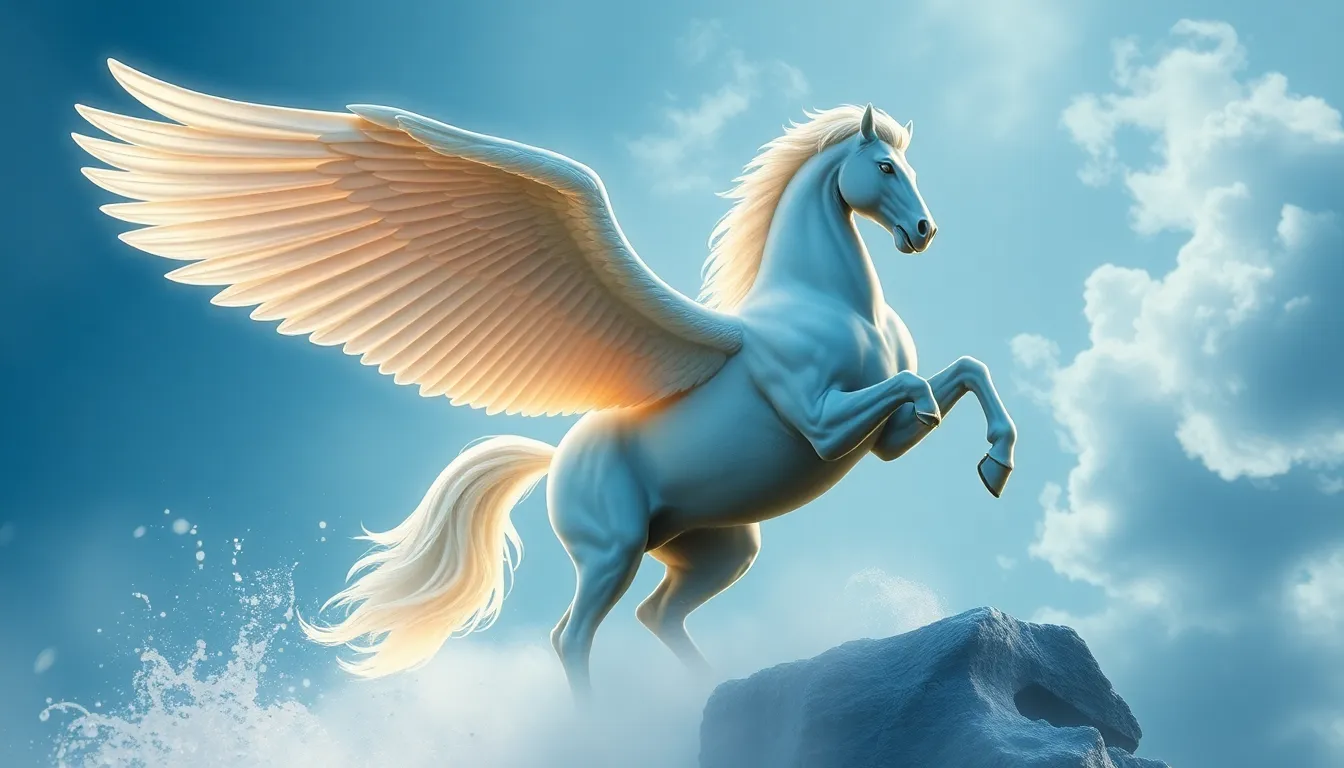The Role of Pegasus in the Myths of Perseus
I. Introduction
In the rich tapestry of Greek mythology, few heroes are as celebrated as Perseus. His adventures are filled with daring feats, heroic battles, and encounters with the divine. Among the many mythical figures that populate his stories, one stands out prominently: Pegasus, the winged horse. This article aims to explore the significance of Pegasus within the context of Perseus’s myths, highlighting their partnership and the impact of this legendary creature on the hero’s epic journey.
II. Origins of Pegasus
The origins of Pegasus are as extraordinary as the creature itself. Born from the blood of Medusa, one of the Gorgons, Pegasus emerged when Perseus beheaded her. This dramatic birth ties Pegasus intimately to Medusa’s story, representing both violence and beauty.
- Birth from Medusa’s Blood: Pegasus sprang forth from the neck of Medusa, symbolizing the transformation of tragedy into something magnificent.
- Connection with Medusa: The bond between Pegasus and Medusa reflects themes of duality—creation arising from destruction.
- Symbolism: Pegasus represents inspiration, poetry, and the flight of the soul, embodying the ideals of freedom and transcendence in ancient mythology.
III. Pegasus as Perseus’s Companion
In the myths of Perseus, Pegasus serves not just as a mode of transportation, but as a vital companion. The bond between them is forged through shared trials and triumphs.
- The Partnership: Pegasus aids Perseus in his quests, allowing him to traverse great distances swiftly and evade dangers.
- Significance of Their Bond: Their relationship exemplifies the importance of companionship and loyalty in heroic narratives.
- Aiding Against Foes: Pegasus plays a crucial role in battles, providing Perseus with the advantage of flight against formidable adversaries.
IV. The Quest for Medusa
Perseus’s most famous mission involves the quest to slay Medusa. Pegasus’s presence is pivotal throughout this journey, influencing the hero’s fate and choices.
- Overview of the Mission: Perseus is tasked with retrieving Medusa’s head to save his mother from the advances of King Polydectes.
- Influence of Pegasus: With Pegasus, Perseus is able to fly over obstacles, making the perilous journey to the Gorgon’s lair less daunting.
- Significance of Flight: The ability to soar through the skies symbolizes freedom and the transcendence of human limitations, vital themes in Perseus’s story.
V. The Slaying of the Sea Monster
Another significant chapter in the myths surrounding Perseus is the tale of Andromeda and the sea monster. Pegasus’s role in this adventure showcases the themes of heroism and divine intervention.
- Myth of Andromeda: Andromeda, chained to a rock as a sacrifice to a sea monster, is saved by Perseus, who arrives on Pegasus.
- Rescuing Andromeda: Pegasus allows Perseus to approach the monster from above, enabling him to strike with precision.
- Heroism and Divine Intervention: Their victory illustrates the interplay between mortal bravery and the favor of the gods, as Pegasus is often seen as a divine steed.
VI. Pegasus in the Wider Context of Greek Mythology
While Pegasus is most closely associated with Perseus, its significance extends beyond this singular myth. The creature has connections with numerous other figures and themes in Greek mythology.
- Relationships with Other Figures: Pegasus is linked to other heroes, such as Bellerophon, who tames the horse to defeat the Chimera.
- Role Beyond Perseus: Pegasus is also associated with the Muses and is often depicted as a symbol of inspiration.
- Cultural Impact: The legacy of Pegasus endures in art, literature, and modern culture, representing ideals of beauty and creativity.
VII. Artistic Representations of Pegasus and Perseus
The stories of Pegasus and Perseus have inspired countless artistic representations throughout history, from ancient pottery to Renaissance paintings.
- Exploration of Art and Literature: Many works depict the dramatic moments of their adventures, showcasing their heroic deeds and the beauty of Pegasus.
- Evolution of Pegasus’s Image: Over time, Pegasus has evolved from a fierce creature of battle to a symbol of peace and artistic inspiration.
- Modern Interpretations: Today, Pegasus continues to influence popular culture, appearing in films, books, and various forms of media.
VIII. Conclusion
In summary, Pegasus plays an essential role in the myths of Perseus, symbolizing the themes of transformation, companionship, and heroism. The bond between Perseus and Pegasus exemplifies the importance of allies in the face of adversity. As we reflect on these myths, it is clear that Pegasus’s legacy endures, reminding us of the power of mythical creatures in storytelling and their ability to inspire generations.




